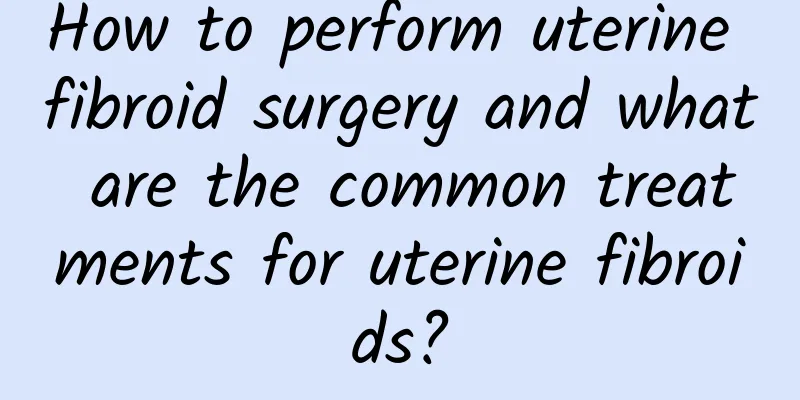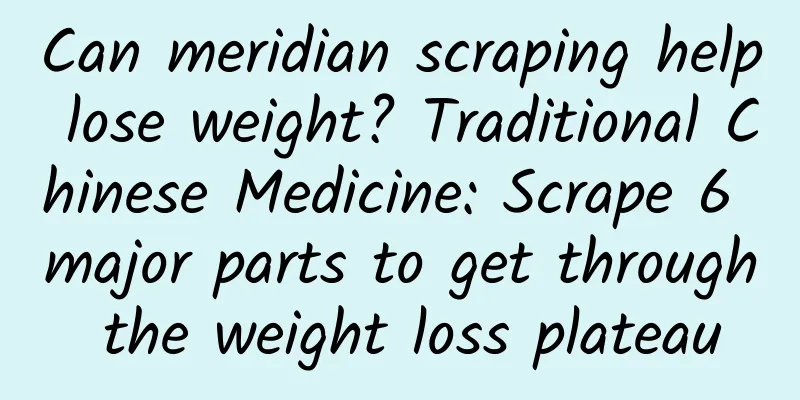How to perform uterine fibroid surgery and what are the common treatments for uterine fibroids?

|
Uterine fibroids are the most common tumors of the female genitalia, and most of them are benign tumors. Because the treatment of uterine fibroids often involves the issue of hysterectomy, it brings a difficult problem to all patients. So, what is the treatment method for uterine fibroids and how to choose? How to treat uterine fibroids? Experts point out that the treatment of uterine fibroids should be based on the specific situation and combined with the patient's fibroids, nature, size, number, age, whether there is a desire to have children and other factors. The treatment of uterine fibroids can be divided into two types: medication and surgery. 1. Follow-up observation First of all, we need to observe carefully and understand the size of the fibroids in detail to determine specific measures. If the fibroids are smaller than 8 weeks of pregnancy in patients with no obvious symptoms, or if the fibroids of people approaching menopause are smaller than 12 weeks of pregnancy and the patient has normal menstruation, if there are no compression symptoms, the treatment can be temporarily stopped as long as follow-up observation is performed. Patients should be reviewed every 3 months. If the estrogen level decreases after menopause, the fibroids may gradually shrink. If the fibroids increase in size, surgical treatment should be performed in time. 2. Drug treatment How to treat uterine fibroids? Drug treatment of uterine fibroids is suitable for patients with a small uterus of less than two months and mild symptoms; patients with large uterine fibroids should reduce the size of the fibroids before surgery to reduce the difficulty of surgery; and women who are approaching menopause. With the doctor's permission, these patients can choose drug treatment. 1. Androgen: It can counteract estrogen, shrink the endometrium, and directly act on smooth muscle to shrink it, reduce bleeding, and make near-menopausal patients reach menopause early. Commonly used drugs: Testosterone propionate 25 mg intramuscular injection once every 5 days, 25 mg intramuscular injection 3 times a day during menstruation, the total monthly amount should not exceed 300 mg, to avoid masculinization 2. Luteinizing hormone-releasing hormone analogs (LHRHα): Suitable for the treatment of small fibroids (≤2 months of gestational uterine size), increased menstrual volume or shortened cycles, menopausal or perimenopausal patients. LHRHα is injected intramuscularly 150 mg daily for 3 to 6 consecutive months. After use, the patient's menstruation decreases or amenorrhea, anemia is gradually corrected, and fibroids can also be reduced, but they gradually increase after discontinuation of the drug and return to their original size. Side effects are symptoms of perimenopausal syndrome, such as hot flashes, sweating, vaginal dryness, etc. LHRHα estrogen deficiency can lead to osteoporosis and is not suitable for long-term continuous use. 3. Surgical treatment How to treat uterine fibroids? There are two types of surgery for uterine fibroids: open surgery and minimally invasive surgery. Generally speaking, when the fibroids are larger than 4 cm, or grow rapidly, and symptoms such as lower abdominal discomfort are obvious, surgical treatment should be performed immediately. 1. Open surgery. Laparotomy includes total hysterectomy and myomectomy. In the 1970s, laparotomy was the most effective means to treat uterine fibroids. Hysterectomy is the direct removal of the patient's uterus. Although this traditional treatment method can largely solve the needs of the disease, it will damage the uterus, the most important reproductive organ of women, and affect women's normal family life. This method is not recommended unless the tumor becomes cancerous. Myomectomy is a surgical procedure to remove fibroids through laparotomy, which is very traumatic, slow to recover, and may cause various complications and infections. Therefore, with the development of modern medical technology and the improvement of medical standards, the mature application of minimally invasive surgery represented by superconducting ablation minimally invasive surgery has brought patients a diagnosis and treatment service with less trauma, less pain, and faster recovery. 2.Minimally invasive surgery. How to treat uterine fibroids? Minimally invasive surgery strives to achieve the best diagnosis and treatment results for patients with minimal trauma. Minimally invasive surgery for uterine fibroids mainly includes laparoscopy and superconducting ablation system. Laparoscopic surgery only requires 3-4 small incisions of 0.5-1 cm in the abdomen, and then the laparoscope is inserted. The surgery does not require the abdomen, has little trauma, and the patient recovers quickly. It will not reduce the patient's own immunity and is not easy to get infected. Superconducting ablation minimally invasive technology can preserve the uterus and remove fibroids without surgery or hospitalization. It can not only maintain the integrity of the female uterus and other reproductive organs, but also will not affect the couple's sex life. IV. Interventional Therapy For the treatment of this disease, which is also what many patients want to do, first of all, interventional treatment is safe. Usually, interventional treatment is to insert a catheter into the blood supply artery of the uterine fibroid to prevent the fibroid from losing its blood supply, atrophy, necrosis, or even disappearance to achieve the purpose of curing the disease. However, the treatment method has yet to be confirmed. Related reading: Fertility and depression may lead to uterine fibroids Surgery or medication? Through the above introduction, I believe you have understood the treatment methods of uterine fibroids. If there are signs of uterine fibroids, the earlier the treatment, the better. |
<<: What are the treatments for uterine fibroids? Is the incidence of uterine fibroids high?
>>: How to treat uterine fibroids? Diet therapy for uterine fibroids
Recommend
What does the contraceptive pill for visiting relatives mean?
Contraceptive pills are divided into many types a...
Immunotherapy beats recurrent miscarriage
When miscarriage occurs, many people take it seri...
What are the causes of menopause?
The causes of menopause are very complex. Some ar...
Does having uterine fibroids affect pregnancy? What are the symptoms of uterine fibroids?
Will women with uterine fibroids affect pregnancy...
How long should you rest after having an abortion? You must pay attention to care after having an abortion
It is best to rest for two weeks after the aborti...
What harm does frequent dysmenorrhea do to us?
In life, dysmenorrhea has already affected the no...
Experts talk about how to prevent cervicitis
The occurrence of cervicitis brings inconvenience...
Can uterine cysts be treated with medicine?
Uterine cysts can be treated with medication, but...
What causes ectopic pregnancy?
Ectopic pregnancy is a gynecological disease that...
Zhang Huimei's 4 secrets to lose weight and redeem herself from the fat
Singer A-mei Chang will serve as a mentor for Zhe...
Will my period be delayed if I take the emergency contraceptive pill? How long will my period be delayed if I take the contraceptive pill?
Will my period be delayed if I take emergency con...
Why do I have back pain after an abortion? This article will help you understand
Lower back pain after abortion is mostly caused b...
What kind of surgery is needed to check uterine fibroids? What are the methods for checking uterine fibroids?
What kind of surgery is needed to check for uteri...
Excessive bleeding after curettage should be taken seriously
Many women are familiar with artificial abortion ...
How is cervical hypertrophy diagnosed in women?
Early diagnosis of cervical hypertrophy can reduc...









